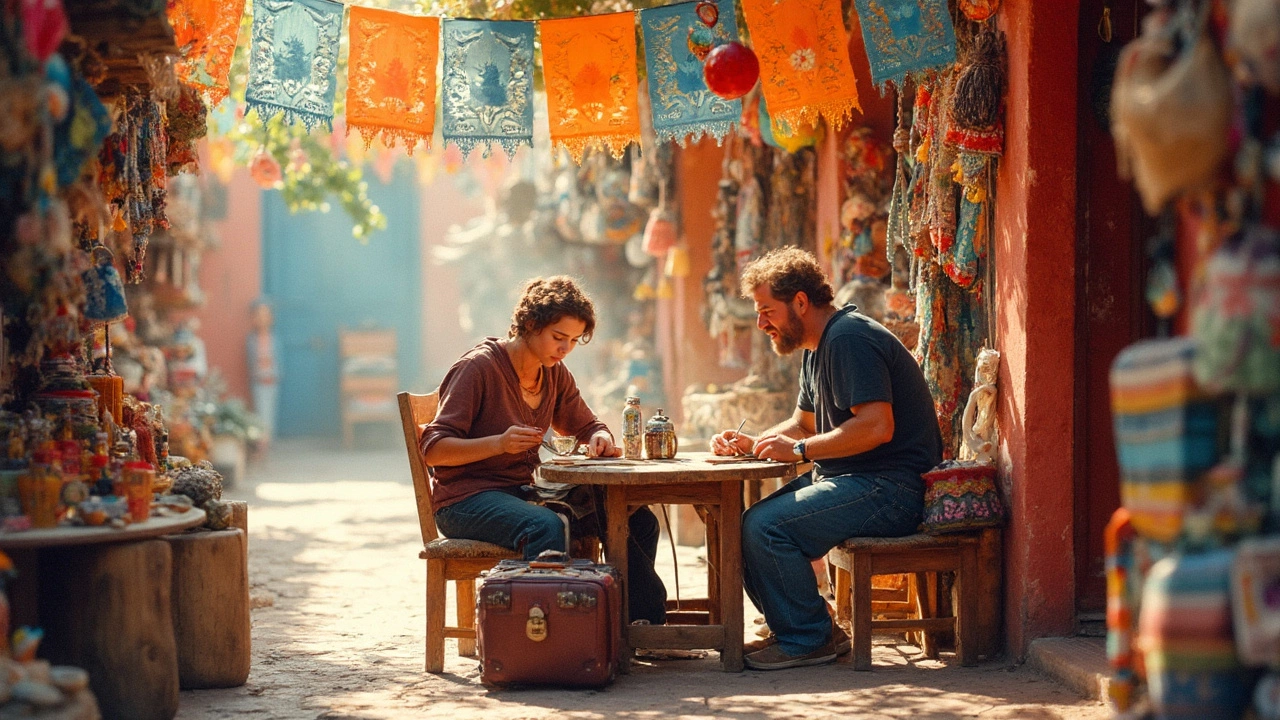Most folks hear “all-inclusive” and think their wallet can take a vacation too. Hate to break it to you, but even the best all-inclusive deals leave a few things up to you and your cash. So, how much money should you actually bring for two weeks in Mexico, even when food, drinks, and a big chunk of fun are already paid?
Before tossing pesos in your pocket, think about how much you want to tip, where you’ll wander off to, what souvenirs might catch your eye, and whether spa days or tours are calling your name. Mexico’s all-inclusive resorts are generous, but little (and sometimes not-so-little) extras add up fast. Nobody wants that panicked feeling halfway through the trip, realizing you’ve blown through everything you brought.
Let’s get real about what “all-inclusive” really covers, what costs sneak up from the sidelines, and simple ways to make every peso stretch. No one-size-fits-all answer here, but by the end, you’ll have a crystal-clear game plan for stress-free spending.
- What’s Covered in All-Inclusive Packages?
- Daily Expenses Outside the Resort
- Best Ways to Carry and Use Money
- Extra Tips to Save and Make the Most of Your Cash
What’s Covered in All-Inclusive Packages?
“All-inclusive” sounds like a magic word, but not everything at a resort is tossed in, no questions asked. The basics are usually sorted though, and you’ll be surprised at just how much is taken care of when you book a Mexico all-inclusive trip.
Most of these packages hook you up with:
- Unlimited meals—breakfast, lunch, dinner, and all those snacks in between
- Alcoholic and non-alcoholic drinks (think beers, cocktails, sodas, juice, coffee)
- Gratuities for basic hotel staff (but extra tipping is encouraged and often expected)
- Access to pools, beaches, gyms, and on-site activities like yoga or dance classes
- Basic entertainment—night shows, live music, themed nights
- Kids’ clubs, water parks, and family-friendly activities
The bigger the resort, the more choices you get with restaurants—some have specialty places like Japanese or steakhouse options, but a few might need a reservation or charge extra.
Just so you don’t get blindsided, here’s a quick look at what’s usually not included:
- Excursions and tours outside the hotel (think ruins, diving, ziplining)
- Premium top-shelf alcohol or wine (the everyday stuff is free, but the fancy stuff isn’t)
- Spa treatments, massages, and salon visits
- Airport transfers (sometimes included, sometimes not—always check!)
- Golf, motorized water sports, special dinners on the beach
- Souvenirs and anything bought in gift shops
For a quick side-by-side, check out this typical breakdown:
| Included | Not Included |
|---|---|
| Buffet & most à la carte meals | Excursions/tours |
| Regular alcoholic & soft drinks | Top-shelf alcohol |
| Use of hotel facilities & activities | Spa, salon, golf |
| Nightly shows & entertainment | Airport transfers (varies) |
| Tips for basic staff (sometimes) | Souvenirs, outside dining |
Make sure you read the fine print for your resort—sometimes even the “unlimited” stuff has limits or rules, like wearing a wristband or sticking to certain hours for free room service. Ask at check-in so you know exactly what you’re getting. That way, you can save that extra cash for what matters.
Daily Expenses Outside the Resort
Even if you’ve gone for an all-inclusive in Mexico, expect to spend cash the second you step off resort property. Not everything in vacationland is covered, especially if you’re itching to check out local markets, hop into a taxi, or grab snacks outside the buffet’s hours. Let’s break down the real numbers and smart moves to keep you from running out of pesos when you want to try something fun or authentic.
- Taxis & Transport: Short rides in tourist zones like Cancun or Playa del Carmen usually run 100–300 pesos (about $6–$18 USD), depending on distance and time of day. Airport shuttles can charge $25–$50 USD each way, especially for private transfers.
- Tours & Day Trips: Snorkeling sessions, ruins tours, or cenote swims aren’t part of the standard package. Excursions cost from $30 up to $120 USD per person. Popular places like Chichen Itza or Tulum with a guide can go higher, around $80–$110 USD per day.
- Sightseeing Fees: Museums or archaeological sites often charge entry (not included in tour price). Plan for 90–500 pesos ($5–$28 USD) as an average for major attractions.
- Shopping & Souvenirs: An artisan blanket may set you back 500 pesos, simple trinkets like magnets or keychains usually run 20–50 pesos each. Bargaining is normal.
- Food & Drinks Outside: Street tacos are cheap at 15–30 pesos each ($1–$2 USD), sit-down restaurants in tourist areas start at 200 pesos ($12+ USD) for a meal. Non-resort cocktails hit 120–200 pesos in the nightlife districts.
- Tipping “off campus”: Standard is 10–20% in restaurants or for taxi drivers. Even street performers or bag handlers at the store may expect a tip of 10–20 pesos.
If you’re the type who likes to adventure, here’s what you could be looking at for spending outside the hotel. Check this ballpark breakdown for a two-week stay:
| Expense | Daily Average (USD) | Two Weeks (USD) |
|---|---|---|
| Transport | $15 | $210 |
| Tours/Excursions | $30 | $420 |
| Shopping | $8 | $112 |
| Food & Drinks | $6 | $84 |
| Tipping (outside resort) | $4 | $56 |
Of course, you might spend less if you love the resort life and only pop out once or twice. But if you’re out every other day, buffering about $800–$900 USD for outside-the-gate fun keeps you from missing out. Always stash a little extra for surprises—because you never regret having options.

Best Ways to Carry and Use Money
If you’re heading to Mexico for two weeks and staying at an all-inclusive, you still need a solid plan for handling your money. It’s not smart to show up with a giant stack of cash (nobody wants to deal with that stress), but relying only on cards can catch you out in smaller shops or for tipping. Here’s what works best.
- Bring a mix of pesos and US dollars. Resorts and touristy spots love dollars, but taxis, street food vendors, and markets almost always want pesos. Aim for about 60% pesos, 40% dollars if you want flexibility.
- Use a travel-friendly debit or credit card—cards that refund ATM fees or skip foreign transaction charges save you cash. Check with your bank before you go, so you don’t get any nasty surprises.
- Grab pesos at an ATM in Mexico rather than converting cash at the airport. The exchange rates at airport kiosks are usually worse, sometimes by 10-15% compared with local ATMs.
- Don’t carry all your cash in one spot. Split it between your wallet, a safe place in your room, and maybe a travel money belt for peace of mind.
If you need to keep tabs on typical costs, here’s what’s average at all-inclusive resorts and surrounding areas in 2025:
| Item | Cost in Pesos | Cost in USD (approx.) |
|---|---|---|
| ATM Withdrawal Fee (per transaction) | 70-120 | $4-7 |
| Tipping (per meal or service) | 40-100 | $2-6 |
| Taxi Ride (short distance) | 60-200 | $3-12 |
| Souvenir (average) | 100-400 | $6-24 |
Always double-check exchange rates before making big transactions. Many shops love quoting prices in dollars, but they often set their own rate, and it’s not always in your favor. If you want to get the most for your Mexico peso, pay in local currency whenever possible.
Extra Tips to Save and Make the Most of Your Cash
Let’s be honest—no one wants to hit their limit halfway through a vacation. If you want to stretch every peso during your two weeks in Mexico, there are a few tricks that really work.
- Skip buying dollars at home—use local ATMs or exchange at major banks in Mexico for better rates. Airport currency booths usually charge higher fees, so walk right past those.
- Stick to pesos for all your spending instead of U.S. dollars; shop owners often use rough exchange rates if you pay in dollars.
- Don’t forget to let your bank know you’re traveling. That way, your card doesn’t get blocked when you’re grabbing margaritas by the pool.
- Tipping in small bills makes life easier. Bring a stack of $20 and $50 peso notes, since staff often can’t break bigger bills and ATM withdrawals almost always spit out large ones.
- Take advantage of the free stuff—water sports gear, classes, shows—since your all-inclusive package probably covers way more than you realize. Ask at the front desk before booking anything extra.
- Venture out smart: check reviews and book tours through local agencies if you leave the resort. Hotel-based tours cost more, and you’ll usually find the same trips cheaper outside.
- Avoid the mini-market at your resort—prices there are wild. Hit a local supermarket or OXXO convenience store for snacks, sunscreen, and basic toiletries.
Taste the local food outside your resort at least once, but look for “comida corrida” lunch spots or street tacos where locals eat. You’ll spend less for way better flavor.
And one last thing: Have a backup debit or credit card tucked away, just in case. Lost cards or empty ATMs pop up more than you’d think in tourist towns.
